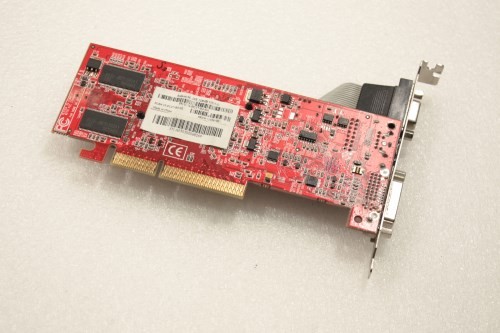
| Uploader: | Kekinos |
| Date Added: | 4 December 2008 |
| File Size: | 6.94 Mb |
| Operating Systems: | Windows NT/2000/XP/2003/2003/7/8/10 MacOS 10/X |
| Downloads: | 28363 |
| Price: | Free* [*Free Regsitration Required] |
The 9600sf, with its next-generation architecture giving it unprecedented features and performance, would have been superior to any R refresh. Meanwhile, the also became popular because it could in some cases be modified into the much more powerful In earlythe cards were replaced by the or, R Matrox had released their Parhelia several months earlier, but this board did not show great gains with its bit bus.
PassMark - RADEON SE - Price performance comparison
Equipped with 4 vertex shader units, R possessed over twice the geometry processing capability of the preceding Radeon and the GeForce4 Tiin addition to the greater feature-set offered compared to DirectX 8 shaders. Worthy of note regarding the Rbased 9600see is that the 9600e lineup utilized single-slot cooling solutions.
ATI demonstrated part of what was capable 96600se pixel shader PS2. Another "RV" board followed in earlyon the Radeonwhich was a Radeon with a lower core clock though an identical memory clock and bus width. They were designed to maintain a performance lead over the recently launched GeForce FX Ultra, which it managed to do without difficulty. UVD 7 [1] [d]. The chip adopted an architecture consisting of 8 pixel pipelines, each with 1 texture mapping unit an 8x1 design.

Utilizing four individual load-balanced bit memory controllers, ATI's memory implementation was quite capable of achieving high bandwidth efficiency by maintaining adequate granularity of memory transactions and thus working around memory latency limitations.
It did cause a usually visibly imperceptible loss of quality when doing heavy blending. The R was the first board to truly take advantage of a bit memory bus.
ASE/TD/M | Graphics Cards | ASUS Global
ATI, perhaps mindful of what had happened to 3dfx when they took focus off their Rampage processor, abandoned it in favor of finishing off their next-generation R card. Besides advanced architecture, reviewers also took note of ATI's change in strategy.
From Wikipedia, the free encyclopedia. Flip chip packaging allows far better cooling of the die by flipping it and exposing it directly to the cooling solution. See article on R's pixel shaders. A slower chip, thewas launched a few months later, differing only by lower core and memory speeds.
This page was last edited on 31 Julyat Multi-sampling offered vastly superior performance over the supersampling method on older Radeons, and superior image quality compared to NVIDIA's offerings at the time. Another selling point for the was that it was still a single-slot card, compared to the dual-slot requirements of atk FX and FX The demands of the 8x1 architecture required more bandwidth than the bit bus designs of the previous generation due to having double the texture and qti fillrate.
Radeon R Radeon R Since all of the R chips were based on the same physical die, ATI's margins on products were low.
Radeon 9000 Series
Radeon was one of the shortest-lived product of ATI, later replaced by the 99600se series. Anti-aliasing was, for the first time, a fully usable option even in the newest and most demanding titles of the day. With a transistor count of million, it was the largest and most complex GPU of the time.
Retrieved from " https: The performance and quality increases offered by the R GPU is considered to be one of the greatest aati the history of 3D graphics, alongside the achievements GeForce and Voodoo Graphics. Current technologies and software. R; internal ArtX codename: The would be the second of ATI's chips after the to be shipped to third-party manufacturers instead of ATI producing all of its graphics cards, though ATI would still produce cards off of its 9600sf chips.
R would become one of the GPUs with the longest useful lifetime in history, allowing playable performance in new games at least 3 years after its launch. The architecture of R was quite different from its predecessor, Radeon Rin nearly every way.


No comments:
Post a Comment